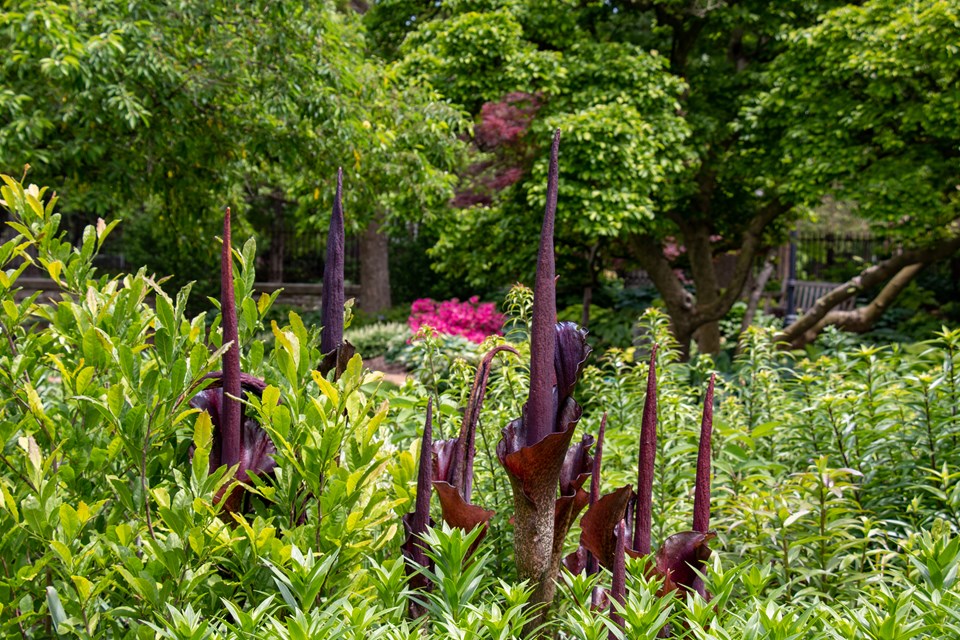Devil’s tongue (Amorphophallus konjac)
Devil's tongue
Amorphophallus konjac, commonly called devil’s tongue, konjaku, konnyaku, or voodoo lily, is a herbaceous, cormous perennial native to forest margins and open thickets in Yunnan Province, China. This species is cultivated around the world as an ornamental and grown throughout East Asia as a food crop. The round, flattened corms can reach up to 11″ in diameter and will spread through offsets. The corms will produce a single, highly divided leaf with a pale pink petiole (leaf stem) mottled with olive green splotches. The petiole can reach 4-5′ tall and the leaf blade can reach up to 4′ across. When the corms reach maturity they will produce an inflorescence before the leaf emerges. The aroid-type infloresence is made up of a dense, spike-like spadix which bears numerous, small, male and female flowers and a leafy, dark maroon to purple-brown spathe with ruffled margins. The 3-4′ tall bloom emits a strong odor of rotten flesh to attract pollinators.
The genus name Amorphophallus comes from the Greek amorphos meaning shapeless or deformed and phallus meaning penis.
The specific epithet konjac comes from the colloquial name for both the plant as well as the starchy food made from the tubers.

Best grown in evenly moist, fertile, well-draining, humusy loams in part sun to part shade. Avoid hot, afternoon sun, especially when the leaf first emerges and is most sensitive to scorching. Fertilize regularly during the growing season. Reduce watering during the winter dormant period. The leaf and inflorescence are intolerant of frost but the corm is hardy from Zones 6-1
| Hardiness zone | 6 - 10 |
| Sun light | Part shade |
| Water | Medium |
| Maintenance | Medium |
A unique specimen for containers, mixed borders, or greenhouses. Starch extracted from the cooked corms is edible and used to make noodles, jellies, fruit candies, vegan seafood, and as a thickening or stabilizing agent in food and drink. The cooked corms also have various traditional medicinal uses.
| Common name | Devil's tongue |
| Botanical name | Amorphophallus konjac |
| Plant type | Bulb |
| Family | Araceae |
| Hardiness zone | 6 - 10 |
| Water | Medium |
| Maintenance | Medium |
| Flower color | Maroon to purple-brown |
| Flowering period | Seasonal bloomer |
| Height | 4 - 5 ft. |
| Width | 3 - 4 ft. |